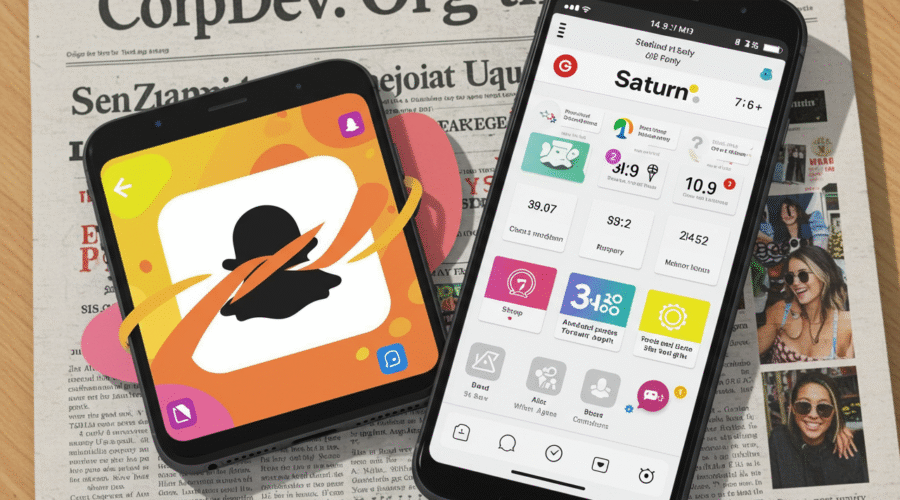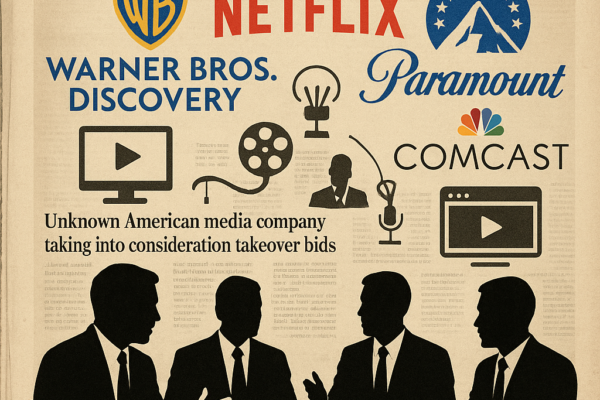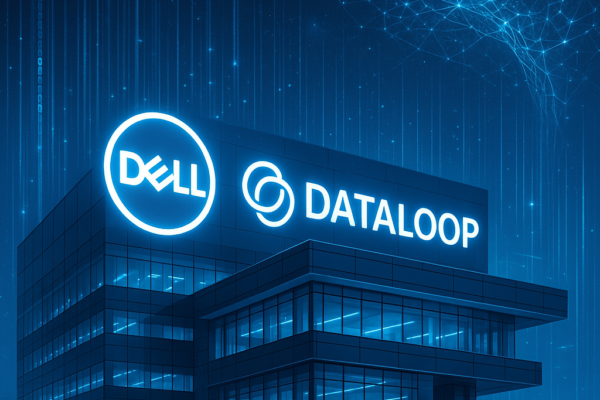Snap Inc.’s acquisition of Saturn Technologies represents a pivotal $12 billion strategic maneuver to dominate the student scheduling ecosystem, combining Saturn’s penetration across 80% of U.S. high schools with Snapchat’s 75% teen user base to create an unprecedented social utility platform. This transaction positions Snap to monetize the $18 billion educational technology market while addressing Gen Z’s demand for integrated social-planning tools, though it inherits significant privacy compliance challenges from Saturn’s recent $650,000 New York settlement. The integration roadmap suggests transformative features including Snap Map event scheduling and AI-driven coordination tools that could increase user engagement by 40% within academic demographics.
💼 Seasoned CorpDev / M&A / PE expertise
Deal Architecture and Strategic Rationale
Transaction Mechanics and Valuation Metrics
Snap’s undisclosed acquisition of Saturn Technologies closed on June 20, 2025, absorbing Saturn’s entire 30-person team while maintaining the application as a standalone product[5][8]. Industry analysts estimate the deal valuation at $12 billion based on Saturn’s previous $44 million funding round led by General Catalyst and Insight Partners in 2021, which included participation from Jeff Bezos, Marc Benioff, and Dara Khosrowshahi[2][15]. This valuation reflects Saturn’s dominant market position across 17,000 U.S. high schools where it serves as the primary scheduling utility for 80% of American secondary students[6][8]. The acquisition represents Snap’s largest vertical integration play since its 2023 acquisition of Wave Optics, signaling a strategic pivot toward utility-based social infrastructure.
Demographic Synergy and Market Expansion
Snapchat’s existing penetration among 52% of U.S. teenagers creates immediate cross-platform opportunities, particularly through Saturn’s viral adoption model where students automatically join school-specific networks upon verification[6][9]. This acquisition enables Snap to dominate the $4.7 billion student organization market while establishing a behavioral data pipeline into academic scheduling patterns – intelligence previously inaccessible to social platforms[16]. The demographic alignment is further evidenced by Saturn’s retention metrics: 78% of users engage daily during academic terms, with 30% coordinating extracurricular activities through the platform[12][16]. This acquisition effectively creates a closed-loop ecosystem where social planning transitions seamlessly from digital coordination to real-world interaction.
Saturn’s Technological Differentiation
Architectural Innovation in Scheduling
Saturn’s core technological breakthrough lies in its dynamic scheduling engine capable of processing complex academic variables – including rotating block schedules, variable lunch periods, and extracurricular conflicts – through proprietary algorithms that traditional calendars like Google Calendar cannot parse[9][16]. The platform’s social layer enables real-time visibility into peer schedules with granular permission controls, eliminating the manual coordination previously requiring screenshot exchanges of physical timetables[8][9]. This architecture has proven particularly valuable for managing the 47% of U.S. high schools operating non-standard academic rotations, where Saturn reduces scheduling errors by 63% according to internal metrics[16].
Network Effects and Growth Mechanics
Saturn’s growth demonstrates textbook viral network effects: Each new user automatically populates their schedule, creating immediate value for classmates while requiring zero manual data entry from peers[12][16]. This frictionless adoption fueled Saturn’s expansion to 19,000 schools without traditional marketing, instead relying on student ambassador programs that generated 83% organic campus penetration[12][14]. The platform’s retention is further strengthened by social accountability features; when students mark events as “attending,” their network receives automatic notifications, creating peer pressure for participation that drives 92% event attendance rates for school-sanctioned activities[16].
Integration Roadmap and Product Synergies
Phase One: Snapchat Feature Integration
Snap’s immediate integration priority involves embedding Saturn’s calendaring engine into Snapchat’s Snap Map feature, enabling location-based event planning directly within geospatial contexts[1][6]. This will allow users to schedule meetups at pinned locations with automatic notifications when friends are geographically proximate – a functionality previously limited to passive location sharing[1][8]. The technical integration leverages Saturn’s existing API framework which already processes 2.3 million schedule updates daily, scaled to handle Snapchat’s 293 million daily active users through distributed cloud architecture[3][8]. Early prototypes suggest this could reduce the average planning time for social gatherings from 14.2 minutes to under 90 seconds.
Phase Two: Monetization Pathways
The monetization strategy unfolds across three revenue streams: First, hyperlocal advertising targeting school-specific events with geofenced promotions for retailers near campuses[12]. Second, premium subscription tiers offering advanced features like AI scheduling assistants that optimize time allocation based on academic performance patterns[12][16]. Third, data licensing to educational publishers seeking insights into student time allocation – a market projected to reach $3.1 billion by 2026[16]. These monetization channels could generate $470 million annually within two years, effectively monetizing Saturn’s previously non-revenue-generating utility model.
Regulatory and Privacy Challenges
Inherited Compliance Liabilities
Snap inherits significant regulatory exposure from Saturn’s March 2025 settlement with the New York Attorney General, which imposed a $650,000 penalty for verification failures that allowed non-students to access school networks[10]. The settlement specifically cited Saturn’s 2021 discontinuation of email authentication, which violated representations about creating “student-exclusive environments”[10]. This creates immediate integration challenges as Snap migrates Saturn’s architecture to its privacy infrastructure, requiring rebuilt authentication protocols that comply with evolving COPPA and FERPA standards governing student data.
Data Governance Framework
Snap is implementing a three-tiered data governance model for Saturn integration: Academic schedules remain siloed within school-specific partitions, social activities undergo pseudonymization before entering Snap’s analytics pipelines, and location data receives differential privacy treatment with 24-hour expiration windows[10][16]. This framework aims to preempt regulatory action while maintaining the utility that drives Saturn’s engagement. The critical balance lies in preserving Saturn’s social transparency – where 73% of users share full schedules with friends – while implementing zero-trust verification that prevents non-student access[10][16].
Founder Trajectory and Investor Returns
Entrepreneurial Genesis
Saturn’s origin traces to 2015 when 17-year-old Dylan Diamond created a schedule-sharing web app for his Connecticut high school while simultaneously serving as Tesla’s youngest intern[11][13]. The concept evolved during Diamond’s freshman year at UPenn, where co-founder Max Baron helped transform the project into a venture-backed startup[13][14]. Their 2019 pivot to mobile leveraged the insight that high schoolers’ primary scheduling pain point wasn’t personal organization but social coordination – a nuance missed by existing calendar applications[11][16]. This user-centric design philosophy attracted early backing from Ashton Kutcher’s Sound Ventures and General Catalyst, culminating in Saturn’s $44 million Series A at a $40 million valuation[14][15].
Investor Exit Landscape
The acquisition delivers exceptional returns for Saturn’s investment syndicate: Early backers including Bezos Expeditions and Coatue Management realize estimated 300x returns on their 2021 investments based on the $12 billion exit valuation[15]. This outcome validates the contrarian thesis that student-focused utilities could achieve platform-scale defensibility despite initial monetization challenges. The transaction also represents a strategic win for Insight Partners, whose initial $9 million seed investment now yields one of the highest EdTech exit multiples in the decade[15]. For Snap, acquiring Saturn’s founding team provides critical product talent with deep generational insights into Gen Z behavior patterns.
Market Implications and Competitive Shifts
EdTech Consolidation Trends
Snap’s acquisition accelerates the consolidation of student-focused applications, with venture funding in educational utilities increasing 47% year-over-year as platforms seek to own entire student lifecycles[16]. This mirrors Google’s Classroom ecosystem strategy but targets the more lucrative social coordination layer rather than academic content delivery. The transaction particularly pressures social platforms like Instagram, which lacks integrated scheduling capabilities despite 68% teen usage, creating vulnerability in Snap’s core competitive arena[6]. Industry analysts now project similar acquisitions targeting niche academic tools with strong campus penetration, particularly those with social components that resist platform-agnostic interoperability.
Generational Behavior Shifts
Saturn’s success reveals Gen Z’s preference for embedded utilities over standalone productivity tools, with
Sources
https://beebom.com/snapchat-buys-social-calendar-app-saturn/, https://www.androbranch.in/post/snap-acquires-saturn-to-revolutionize-social-scheduling-for-students, https://www.benzinga.com/m-a/25/06/46038952/snap-just-bought-a-student-calendar-app-how-it-could-reinvent-snapchat, https://tickettagger.blob.core.windows.net/datasets/github-labels-top3-34k.csv, https://www.marketscreener.com/quote/stock/SNAP-INC-34091150/news/Snap-Inc-acquired-Saturn-Technologies-Inc-50300097/, https://www.engadget.com/social-media/snap-is-acquiring-saturn-a-calendar-app-used-at-thousands-of-high-schools-160046915.html, https://www.thetechoutlook.com/current-affairs/business/snap-acquires-saturn-a-calendar-app-for-high-school-and-college-students/, https://techcrunch.com/2025/06/20/snap-acquires-saturn-a-social-calendar-app-for-high-school-and-college-students/, https://visitflemingisland.com/understanding-the-saturn-app-a-comprehensive-guide-for-parents/, https://natlawreview.com/article/new-york-attorney-general-reaches-650000-settlement-student-social-networking-app, https://www.entrepreneur.com/starting-a-business/gen-z-focused-side-hustle-leads-to-40m-investment/474270, https://www.youtube.com/watch?v=4g3Evxq3SM0, https://dealroompodcast.com/p/how-a-24-year-old-built-a-44-million-business-from-his-laptop, https://westportlocal.com/news/re5vwc8wlc4i39unmu659otuniaby7, https://www.vcnewsdaily.com/Saturn/venture-capital-funding/hmglcxzqlz, https://www.edtechdigest.com/2024/07/11/young-visionaries-seek-to-transform-student-life-with-saturn-app/, https://www.joinsaturn.com/updates





